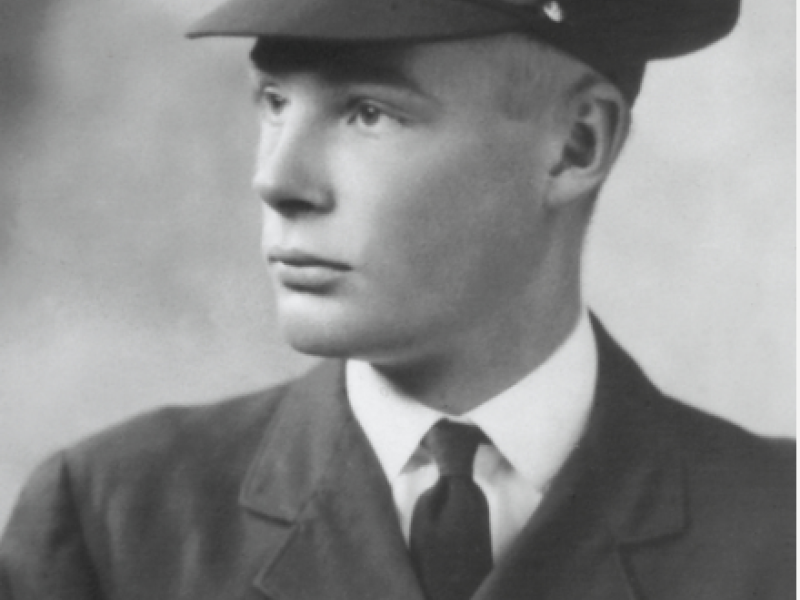Wing Commander Archibald Robert Tindal
Popularly known as “Arch”, Archibald Robert Tindal was born in Eversley in Hampshire, England, on 18 January 1916. He was the second child of Archibald and Hilda Tindal. Five months earlier his family had left Armidale in New South Wales to travel to England so that his father could join the British Army.
Arch’s father was born into a family of pioneering pastoralists based around Grafton, in north-eastern New South Wales. He served as a second lieutenant in France with the 177th Brigade, Royal Field Artillery, while his family, including the infant Arch Tindal, lived in England. Archibald Tindal senior was killed on the Somme on 8 September 1916 during the battle of Guillemont. Two of his brothers were later awarded the Military Cross while serving in the British Army.
After the war, the widowed Hilda Tindal returned to Australia with her two children. The family settled in Armidale, where Arch Tindal attended the prestigious Armidale School. He became captain of Tyrrell House and a school monitor, and was reportedly a good rifle shot, serving in the school cadets.
Tindal enlisted in the Royal Australian Air Force in July 1934 as an 18-year-old air cadet. A year later he was commissioned as a pilot officer and posted to No. 3 Squadron. After a year he began a series of postings to different headquarters and schools.
Following the outbreak of the Second World War, in April 1941, Tindal – now a squadron leader – was posted to No. 24 Squadron in Townsville, northern Queensland. This was a general purpose squadron equipped with the single-engine CAC Wirraway aircraft and twin-engine Lockheed Hudsons. A month later Tindal was posted to RAAF headquarters in Townsville.
In January 1942 Tindal was promoted to wing commander and sent to Darwin, where he became the armament officer for RAAF North Western Area Headquarters.
With Japan’s entry into the war, New Guinea and northern Australia were now in the front line. While visiting New Britain in early January, Tindal twice flew into action as part of attempts to intercept enemy aircraft during Japanese attacks on Rabaul.
Tindal went into action again six weeks later when the Japanese attacked Darwin on 19 February. At around 10am, 188 Japanese aircraft attacked Darwin’s harbour, the township, and the nearby airfields.
Two hours later, 54 Japanese bombers attacked the RAAF airfield. During this second raid, Tindal was sitting on top of a trench firing a gas-operated machine-gun when he was hit and killed by a cannon shell.
He was 26 years old.
Tindal is thought to be the first RAAF combat fatality sustained on the Australian mainland. The air force base at Katherine was later named “Tindal” in his honour, and RAAF Base Tindal remains one of Australia’s most important defence installations.
Karl James, Historian, Military History Section

 Australian War Memorial
Australian War Memorial